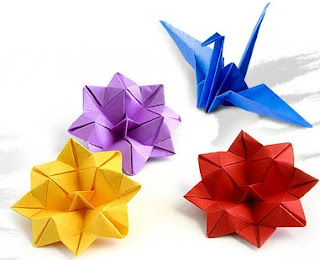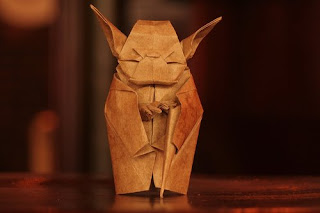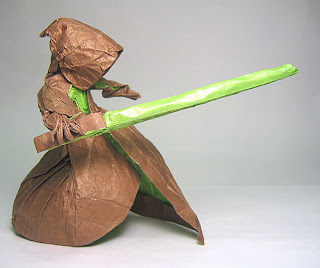In Japan, Origami is believed to have existed since the Heian Period (741-1191) among the sami Shinto as a cover bottle of sake (rice wine) during the ceremony of worship, women and children. At that time still known by the term origami orikata, orisui or orimono.
In those days are allowed to use a knife to cut paper. Shapes known in the Kamakura period (1185-1333) is noshi. Noshi is short-awabi noshi, namely oyster meat juice is dried and is considered a special dish of the Japanese. Noshi considered good luck to anyone who receives it.
Since Muromachi Period (1338-1573) use a knife to cut the paper has been discontinued. Origami later developed into a way of separating the upper-class and lower class. Samurai followed the teachings of Ise while ordinary people follow the teachings of Ogasawara.
In the development of origami has become so synonymous with buday Japan, which is inherited from generation to generation from time to time. Origami mainly developed by using the original Japanese paper called Washi.
Currently origami has become inseparable from Japanese culture. Especially in Shinto ceremonial religion be retained until now.
In the same year a treatise titled "Chushingura Orikata" which contains the human form folds also issued by the same author. In 1850 a manuscript titled Kayaragusa published another article. This text contains two parts origami, namely religious. Most of the origami model contained in the Chushingura Orikata.
In the 1819 book "twinkling of an eye produces a paper bird" to show how birds resulting from the paper. Then in 1845 a complete collection seam Japanese tradition is written and published in book Kan no Mado. The book contains approximately 150 examples of origami, including the model frog.
In 1880 it began the art of paper folding with Origami people. The word is derived from the Japanese oru (fold) and our (paper). The word origami then began to replace the term orikata, orisui or orimono.
In the Show era (1926-1989) origami noshi less desirable and just that is still popularly used for the exchange of gifts between the samurai. At that time the red and white paper is used to bind pieces of meat juice, oysters, or fish.
In the Edo period (1600-1868) an abundant production of paper makes the paper easy to obtain. This makes origami grow more rapidly. In the late Edo period produced nearly 70 forms including crane (Orizuru), frogs, boats and balloons that still remain unknown until now. In the Genroku era (1688-1704), the style of fabric origami crane (Orizuru), and various shades of boots became popular and are often made in a fabric pattern Ukiyoe. It vacate the road origami to grow wider in the present.
In the Meiji era (1868-1912), origami is used as a teaching tool in kindergartens and primary schools. That's all thanks to the influence of education experts kindergarten Friedrich Wilhelm August (1782-1852). He was a German educator in the 19th century. He uses traditional origami europe to produce geometric shapes. This concept was later used extensively in kindergarten in Japan.






{ 0 comments... read them below or add one }
Post a Comment